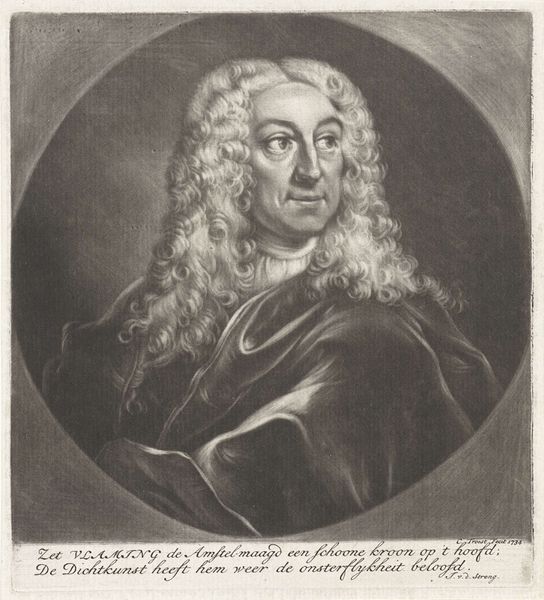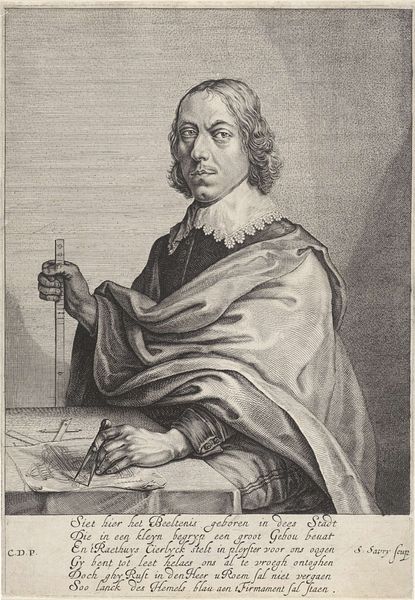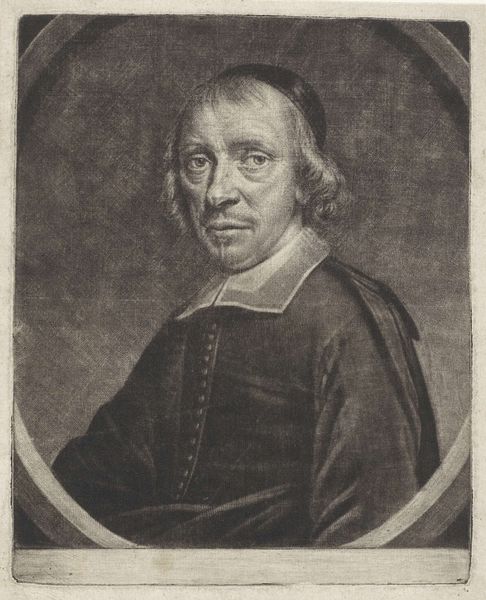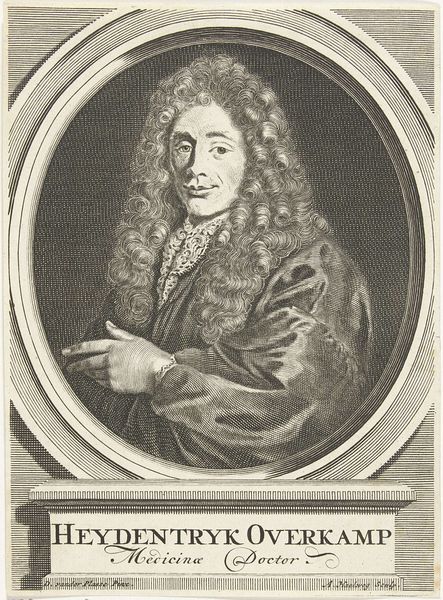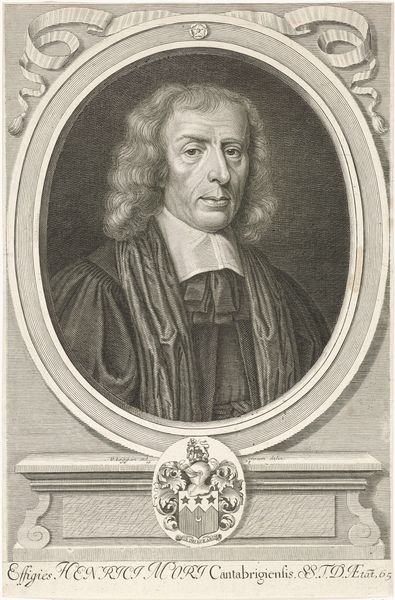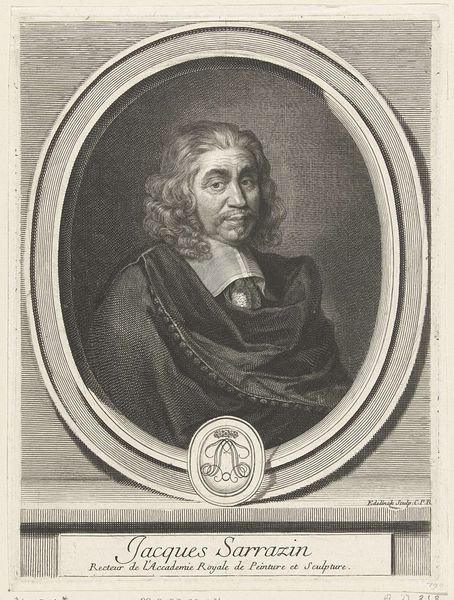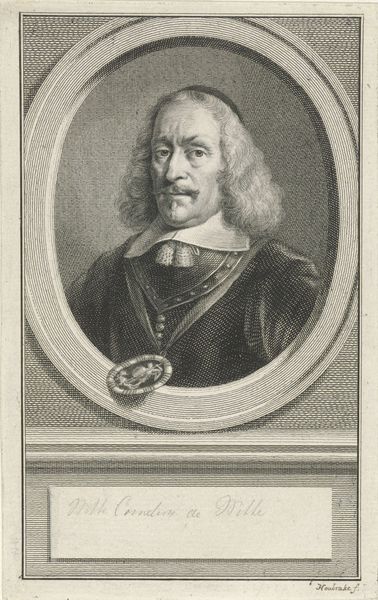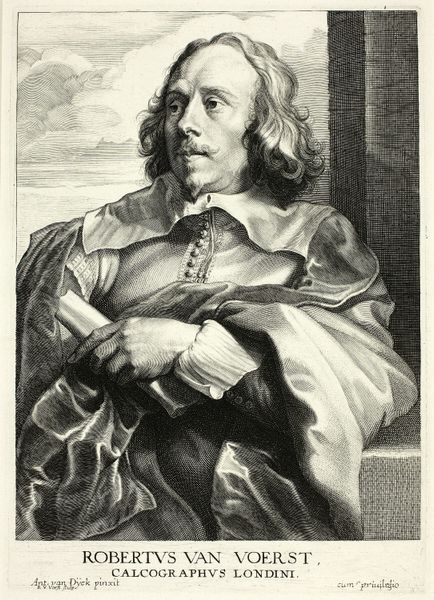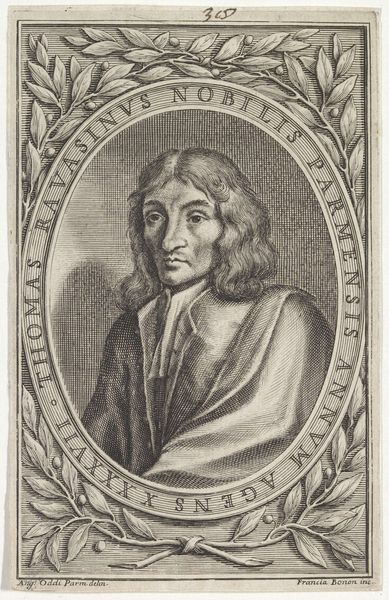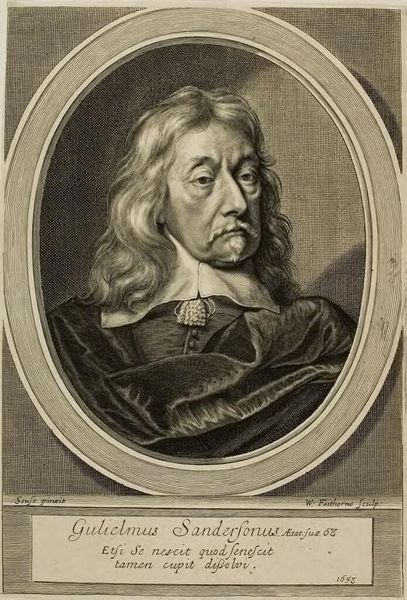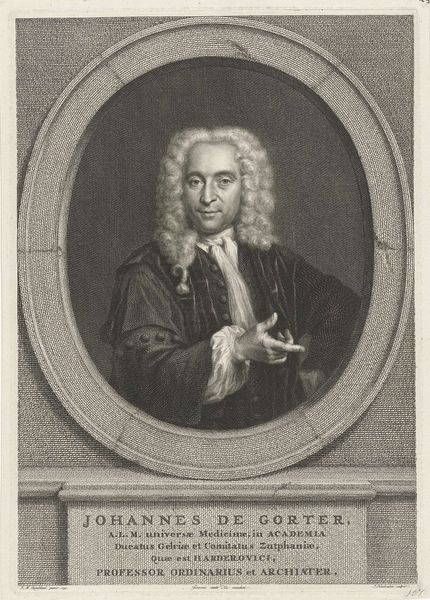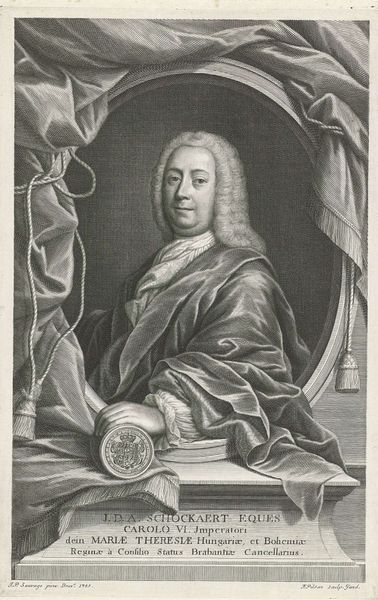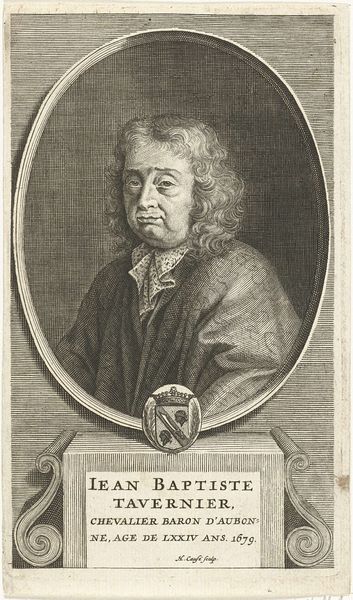
drawing, paper, ink, engraving
#
portrait
#
drawing
#
self-portrait
#
baroque
#
charcoal drawing
#
paper
#
ink
#
engraving
Dimensions: height 190 mm, width 146 mm
Copyright: Rijks Museum: Open Domain
Curator: Here we have a self-portrait by Johannes van Vilsteren, dating from 1743. It's rendered in ink and engraving on paper. Editor: The first thing that strikes me is the somewhat unsettling expression. He's staring right at us, almost daring us to judge. Curator: Yes, there's a directness, wouldn’t you agree? The process of creating an engraving is laborious. Think of the planning involved, each line etched precisely, reflecting hours, potentially days, of work to represent this singular vision of himself. Editor: The symbols of his era are carefully constructed: The flowing wig, the loosely draped garment—all contribute to a deliberate presentation of status and intellect. It's as though he's curating his own image for posterity. Curator: Precisely, he’s presenting himself to a very specific consumer, one familiar with the language of Baroque portraiture and its markers of privilege. Consider the labor that would have been involved, not only from him but from the paper maker, ink producer, even the metalworkers creating the engraving tools. All facets contribute to the finished object, shaping the perception of this man centuries later. Editor: His gaze reminds me a bit of depictions of the mythological Narcissus— caught in his own reflection, but there's a vulnerability too, wouldn't you agree? The slightly parted lips almost give the sense that he's about to speak. What secrets does he want to reveal? Curator: Secrets or aspirations, perhaps? The material reality, I think, of a printed image also opens questions of accessibility. Did he make multiple impressions? Was this a means to circulate his image amongst his peers or patrons? The artwork as commodity raises fascinating questions of social distribution in that time. Editor: It really highlights how deeply entwined our self-perception is with cultural symbols of our age. His portrait makes me question the modern symbols we use for self-representation on platforms today. Curator: Yes, it does make me wonder about how artists have controlled the means of production to control an image over the passage of time. Editor: Looking at the artist’s self-representation allows an enduring way to find continuities with cultural past. Curator: I see how important it is to examine how the artwork carries meaning as an aesthetic object as well as how it becomes intertwined with the economic realities of its creation and circulation.
Comments
No comments
Be the first to comment and join the conversation on the ultimate creative platform.
